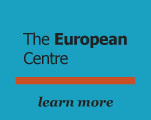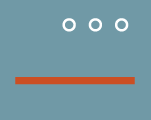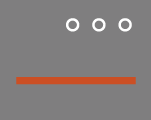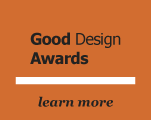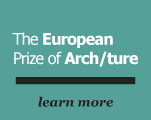Patrik Schumacher Tell a friend

The 2025 European Prize For Architecture
Patrik Schumacher from Zaha Hadid Architecture is honored during the 2025 International Architecture Awards, where he will be officially presented with “Europe’s Highest Award in Architecture” during “The City and the World” Athens Symposium and a dinner adjacent to the Acropolis, on September 20.
Patrik Schumacher, one of the leading voices and brilliant thinkers in today’s contemporary architecture, has been named the 2025 Laureate of The European Prize for Architecture by The Chicago Athenaeum: Museum of Architecture and Design and The European Centre for Architecture Art Design and Urban Studies for his independent, often controversial, critical discourse on the subject of architecture and for the continuation of Zaha Hadid Architecture (ZHA)—the renegade architecture office that he helped found, establish, and lead with Ms. Hadid until her untimely death.
This year’s European Prize for Architecture has been bestowed on two 2025 Laureates: Patrik Schmacher and the Palestinian architect Suad Amiry.
“Unquestionably,” states Christian Narkiewicz-Laine, architecture critic and museum president of The Chicago Athenaeum, “Schumacher inherited one of the highest-profile jobs in global architecture, with real clout to see his ideas and theories put into practice.”
“Lauded as a visionary amongst his international contemporaries, he has also delivered some extremely visionary post-Hadid buildings in his own right,” including the new Chengdu Science Fiction Museum in Chengdu, China (2023); Zhuhai Jinwan Civic Arts Centre in Zhuhai, China (2023); and the Masaryčka Building, Prague, Czech Republic (2023) which have won recent International Architecture Awards from The Chicago Athenaeum."
“Possessing a profound knowledge of architectural history and embracing radical theories, he has never merely replicated the status quo of ZHA, but his search for meaningful architecture has been reflected in buildings that to this day, defy stylistic categorizations, are constantly evolving, and always fresh in their approach,” Narkiewicz-Laine continues.
“Schumacher joined ZHA almost 30 years ago and worked alongside Hadid on all the practice's major projects.”
“At the time of Hadid’s death” (2016), states Schumacher, "the practice had 36 projects on-site in 21 countries, we vowed to complete. The first of these, the Salerno Maritime Museum, opened in Italy in June in an emotional ceremony which ZHA staff flew from around the world to attend.”
“The second project, the Port House in Antwerp, opened in September.”
“Two further projects were set to open that year: the King Abdullah Petroleum Research Center in Riyadh, Saudi Arabia and the Mathematics Gallery in London's Science Museum,” he recollects.
“Through three decades, Schumacher was and continues to be highly influenced by Hadid,” asserts Narkiewicz-Laine.
“However, he is not just carrying the torch, but also blazing his own path through design and through his intense, critical eye of the world around himself.”
“Zaha was very courageous, very driven in terms of wanting to excel,” remembers Schumacher.
“There was an intensity about her, but also an incredible loyalty and warmth. There was no snobbery or pretentiousness. She was an easy communicator and a good friend who was always ready with advice. She was very frank, very entertaining and fun."
“One of Zaha’s greatest achievements was the radical transformation of what it means to design; the fluidity, the curvilinearity, the dynamism that she explored in her paintings.”
“I'm an ideas person,” Schumacher goes on, “but I'm also a person who wants to finish things; to execute and deliver. My role was to know when to stop and turn from exploration into commitment on a project.”
“The secret of Zaha’s success was that she didn’t insist on only using her own ideas,” says Schumacher.
“She was someone who delivered a fantastic new universe of possibilities through her radical innovations, but she also allowed younger staff to flourish and exercise their own creativity competitively. That’s the way I came into this.”
“At ZHA, we filtered out the best ideas, then we worked together to develop them. It’s a very collaborative, collective process, and it's the secret of our versatility. Our projects share DNA but are quite diverse—more diverse than you find from other so-called star architects, where there’s more of a sense that one person is the creator. That wasn’t the case then, and it’s not the case now.”
“Patrik Schumacher is also widely recognized as one of the most prominent thought leaders within the fields of architecture, urbanism and design. His research interest focuses on designing and simulating real and virtual environments (and their fusion) with the goal to increase their power to engender and facilitate productive communicative interactions,” Narkiewicz-Laine observes.
“Schumacher is a proponent of parametricism (a term he coined in 2008); an approach that uses algorithms and computer programs to manipulate different variables for design purposes.
“With this approach, all of the design parameters are interconnected, meaning that you can play with them to see how changes alter the form.”
“It allows for adaptation late into a project, and results in complex, organic, fluid forms that mimic those seen in nature (and that have long been the hallmark of Zaha Hadid's designs).”
“The respective research agendas are ‘Agent-based Parametric Semiology’ and ‘Cyber-Urban Integration’.”
“Accordingly, he is lecturing on the design opportunities and challenges posed by the advent of cyberspace and the collective project of the metaverse.”
“Schumacher has been publishing theoretical articles in architectural magazines and anthologies since 1996, arguing for an expanded formal and spatial design repertoire as architecture's response to the new level of societal complexity and dynamism brought on by the socio-economic transition from Fordism to Post-Fordism,” Narkiewicz-Laine affirms.
“Since 2007, he has been promoting Parametricism as an epochal style for the 21st Century.”
‘Schumacher uses the term ‘parametricism’ to denote the use in the architecture of advanced computational design techniques.”
“In 2008, he launched a manifesto for ‘parametricism’ at the Venice Biennale of Architecture; and a year later, he published the article ‘Parametricism: A New Global Style for Architecture and Urban Design’ in the Journal of Architectural Design."
“In 2011, Schumacher published the first volume of The Autopoiesis of Architecture, which he called his ‘opus magnum,’ offering a ‘New Framework for Architecture,’ followed by the second volume, subtitled ‘A New Agenda for Architecture,’ in 2012.”
“Schumacher is also one of the most outspoken figures in today's architecture.”
“He has never shunned away from controversy. He is rightly outspoken. His earnestness is disarming; he speaks energetically and passionately about how access to cities, and their economically dynamic economies, is being hamstrung by high housing prices.”
“He has immodestly, boldly claimed that ‘Parametricism,’ his theoretical approach to architecture, should replace modernism and its successors to become the universal style of the 21st Century.”
“In 2015, he gave a speech at the World Architecture Festival in Berlin—an infamous speech expressing global neoliberalism.”
“Later, in 2016, he gave another speech that nearly caused a riot. That speech was about how to reduce sky-high urban housing prices, where he proposed the abolition of regulation, the elimination of social housing, privatization of all public spaces—including streets—and the selling off most of London’s Hyde Park for development to end the housing crisis in London.”
“As a former Marxist, Schumacher's viewpoints have been described as anarcho-capitalism.”
“He advocates for the full decentralization and privatization of architecture, planning, and development, envisioning a competitive landscape of mini-polites organized as corporations vying in the market for communal living.”
“He has also argued that the government should no longer fund art and architecture schools."
“He also states he is being depicted as a kind of villain, a fascist. But he rather surprisingly argues that he roots his contrarian, libertarian views in the motivations of the urbanist mainstream—namely, broad-based prosperity and access to urban economies."
“In 2018, he also launched an attack on the 16th Venice Biennale of Architecture stating: ‘the national pavilions are devoid of architecture all together'; “meaning that all 63 national pavilions did not show any new architecture, but focused instead on one-liner installations.”
He continues: "Instead of being informed about and confronted with the best and most innovative architectural projects or designs of the last two years from the various countries represented, we had to suffer, once more, the usurpation of 'our' pavilions by curators to disseminate their messages, and present themselves via installations," he continued.”
“In 2023, he again slammed the Venice Architecture Biennale, labelling the event an ‘anti-architectural biennale’."
"The Venice 'Architecture' Biennale is mislabelled and should stop laying claim to the title of architecture," he wrote.
"This title is just generating confusion and disappointment with respect to an event that does not show any architecture."
“He drew particular attention to the German pavilion, which he described as full of ‘piles of construction material’."
“Stirring up even more, broader dissent, in 2025, he waded into architecture's culture wars by claiming that ‘woke virtue signaling’ has destroyed the intellectual rigour of the profession,” continues Narkiewicz-Laine.
”Schumacher made his assertions in a paper titled ‘The End of Architecture’ in the Khōrein Journal, published by the Institute for Philosophy and Social Theory at the University of Belgrade.”
“Schumacher argues that the architecture profession has erased itself,” reports Narkiewicz-Laine.
"Architecture, as an autonomous, theory-led discipline, has ceased to exist," he wrote.
"The discipline has self-dissolved, eroding its intellectual and professional autonomy under the pressures of anti-capitalist politicization and woke virtue signalling."
"Architecture, formerly an academic, discourse-steered discipline and innovative, theory-led and research-based profession, has contracted back into a craft, uncritically and unambitiously subjecting itself to pre-ordained routines and typologies," he continues.
"In effect, the whole apparatus of the academic discipline—architectural university departments, theoretical journals, conferences, biennales, etc.—might as well be shut down."
“Schumacher, who teaches at the Architectural Association in London, believes that universities have stopped pushing forward the development of architecture, with actual design projects being replaced by ‘woke studies’."
“He added that a lack of innovation meant that the majority of buildings designed today could have been designed 100 years ago.”
"The bulk of architecture designed in 2024 could have been designed in 1974 or indeed in 1924. It is not only stagnant but positively regressive," he adds.
"All styles, with the exception of parametricism, are retro styles: minimalism, neo-modernism, neo-rationalism, neo-classicism, neo-historicism, neo-postmodernism."
“Schumacher blamed the death of architecture on a combination of a lack of ‘rigorous critique’ in education, as well as in the architectural press,” states Narkiewicz-Laine.
"In any event, this apparatus, in its university incarnation, is distracting itself with all manner of woke studies, woke criticism, and woke polemical, artistic-symbolic illustrations standing in for the absent design projects," he writes.
Each year, The European Prize for Architecture is awarded jointly by The European Centre for Architecture Art Design and Urban Studies and The Chicago Athenaeum: Museum of Architecture and Design to architects who have made a commitment to forward the principles of European humanism and the art of architecture.
The European Prize for Architecture is not a “lifetime of achievement award,” but rather serves as an impetus to support new ideas, to encourage and foster more challenge-making and forward-thinking about buildings and the environment, and to prompt the pushing of the envelope to obtain an even greater, more profound result.
The Prize also honors the commitment and achievements of the best European architects who have determined a more critical, intellectual, and artistic approach to the design of buildings and cities.
Previous Laureates include: Bjarke Ingels (Denmark), Graft Architects (Germany), TYIN Architects (Norway), Marco Casagrande (Finland), Alessandro Mendini (Italy), Santiago Calatrava (Spain/Switzerland), LAVA Laboratory for Visionary Architecture (Germany), Manuelle Gautrand (France), Sergei Tchoban (Russia/Germany), Henning Larsen Architects (Denmark), Wolfgang Tschapeller (Austria), Francine Houben and Dickvan Gameren of the Dutch firm Mecanoo (The Netherlands), Christoph Ingenhoven (Germany), and Ayse Mücella Yapici, Tayfun Kahraman, and Can Atalay–three imprisoned Turkish architects and champions of human rights.
Last year, the European Prize for Architecture was given to the Austrian architecture office of querkraft architektur.
Born in 1961 in Bonn, Germany, Patrik Schumacher studied philosophy and mathematics at the Friedrich Wilhelm University in Bonn in the early 1980s.
In the mid 1980s, he studied architecture in Stuttgart; and in 1987, he continued his architecture studies at London Southbank University while also working in the design studio of Zaha Hadid Architecture, primarily on the Vitra Fire station in Weil am Rhein, Germany (1993).
In 1990, he returned to the University of Stuttgart to complete his Diploma in Architecture and then re-joined the office of Zaha Hadid.
In 1999, he completed a PhD at the Institute of Cultural Science, Klagenfurt University.
Since its incorporation in the late 1990s, Schumacher served as a director of Zaha Hadid Architects (ZHA) and is credited as a partner and co-author of the practice's output.
Since Hadid's death in April 2016, he has been leading the firm as its sole remaining partner, whilst remaining true to their shared vision.
Schumacher started an academic career in 1993, teaching a post-graduate diploma course in architecture at Kingston University.
From 1994 to 1996, Schumacher was an assistant professor at Technische Universität Berlin (TU).
In 1996, he founded, together with Brett Steele, the Design Research Laboratory (AADRL) at the Architectural Association School of Architecture in London, where he continues to teach.
He also holds an honorary doctorate as Doctor of Social Science honoris causa from La Universidad Francisco Marroquin.
From 2000 to 2015, he co-taught a regular Masterclass with Zaha Hadid at the University of Applied Arts in Vienna, where he continues to lead a PhD research group.
He has been a guest professor at Harvard’s Graduate School of Design in 2013 and 2018.
In 2013, he was appointed as the first John Portman Chair in Architecture at Harvard University’s Graduate School of Design and again in 2018.
Since 2019, he has acted as a PhD supervisor at Tongji University’s International PhD program in Shanghai.
Patrik Schumacher is lecturing worldwide, and over the last 20 years, he has contributed over 120 articles to architectural journals and anthologies.
In 2003, he published the book Digital Hadid—Landscapes in Motion.
In 2007, he invented the phrase “Parametricism” and has since published a series of manifestos promoting “Parametricism” as the new epochal style for the 21st Century.
In 2010-2012, he published his two-volume theoretical opus magnum, The Autopoiesis of Architecture.
In 2015, he guest-edited the magazine AD – Parametricism 2.0—setting architecture’s agenda for the 21st Century with a new emphasis on the societal relevance of ‘parametricism.’
His latest book, Tectonism–Architecture for the 21st Century, was released in 2023.
His current research and design interest is focused on the metaverse and the integration of real and virtual communication spaces.
Honors and awards include:
In 2010, Patrik Schumacher won the Royal Institute of British Architects’ Stirling Prize for excellence in architecture together with Zaha Hadid, for MAXXI, the National Italian Museum for Art and Architecture of the 21st Century in Rome and the Evelyn Grace Academy in London and also the RIBA Gold Medal in 2016.
ZHA has also been the numerous recipients of The International Architecture Awards from The Chicago Athenaeum.
“In 2008, he launched a manifesto for ‘parametricism’ at the Venice Biennale of Architecture, and a year later, he published the article ‘Parametricism: A New Global Style for Architecture and Urban Design’ in the Journal of Architectural Design."
“In 2011, Schumacher published the first volume of The Audtopoiesis of Architecture, which he called his ‘opus magnum,’ offering a ‘New Framework for Architecture,’ followed by the second volume, subtitled ‘A New Agenda for Architecture,’ in 2012.”
Several key ZHA buildings under Patrik Schumacher's direction include:
Opus Tower, Dubai, United Arab Emirates (2019) features the tower’s unique design as a glowing cube with a central void and a reflective glass façade that adapts to changing light conditions, thereby creating a dynamic interplay with the urban landscape.
Morpheus Hotel, Macau, China (2018) has a seven-story atrium and an exceptionally designed world-first exoskeletal structure. The buildings’ fluid form is derived from China’s rich traditional history of jade carvings. A series of voids is carved through the center of the building, giving it a sculptural appearance and creating an urban window for community interaction. The exoskeleton, consisting of a series of voids and bridges, virtually eliminates the need for interior walls or columns, bridging the hotel towers to create a self-supporting structure that also houses the façade, restaurants, and a club lounge, contributing to an unparalleled hospitality experience.
King Abdullah Petroleum Studies and Research Center (KAPSARC), Riyadh, Saudi Arabia (2017) is a combination of five buildings around a schematic arrangement of hexagonal prismatic honeycomb structures to formulate the entire campus. The building’s honeycomb façade provides solar shading, reducing heat gain and enhancing energy efficiency.
Beijing Daxing International Airport Beijing, China (2019) features an iconic starfish-shaped design, serving as a gateway to the bustling city of Beijing. It houses the world’s largest single-building terminal, accommodating up to 72 million passengers annually. The building utilizes a series of intersecting steel trusses that support the vast roof structure, allowing for large, open interior spaces and minimizing the need for interior columns.
The Napoli Afragola Train Station, Naples, Italy (2017) connects four high-speed intercity lines, three inter-regional lines, and a local commuter line. It is strategically located to facilitate travel between Bari, Reggio Calabria, and the north of Italy and Europe, serving 15 million residents. The station is designed as an urban public bridge that connects communities on either side of the railway.
“Zaha Hadid's work was always about innovation, and Schumacher is determined to ensure the practice continues to build on this,” states Narkiewicz-Laine.
“Just as when Zaha was around, we are always looking for the next step of development,” Schumacher states.
“There's a strong DNA in this company, a strong set of overall principles, but there's also a process of maturation and continuous innovation, and that's something I'm focusing on. I will be the main driver of this innovation, but we’ve also built a research team over the years and have several other major creative figures within the team who will help pull this along,” he continues.
“If Schumacher's time working at ZHA has been on a ‘rollercoaster’,” concludes Narkiewicz-Laine, “then the future looks set for more twists and turns, and Schumacher is fully embracing all of it.”
Patrik Schumacher is the 23rd Laureate of the European Prize for Architecture.
The formal ceremony and gala dinner for what has come to be known throughout the world as Europe’s highest honor for architecture will be held at a Gala Dinner at the foot of the Acropolis in Athens, Greece—the birthplace of Western Architecture—on Saturday, September 20, 2025.
An exhibition on the latest projects by ZHA opens at The European Centre (74 Mitropoleos Street) in Athens that same evening.
For more information and press photographs, contact: Ms. Konstadina Geladaki, Director of Communications, Contemporary Space Athens at konstadina@europeanarch.eu
About The Chicago Athenaeum (www.chi-athenaeum.org) is a global nonprofit education and research institute supported by its members. Its mission is to provide public education about the significance of architecture and design and how those disciplines can have a positive effect on the human environment
EUROPEAN PRIZE FOR ARCHITECTURE® is a Federally Registered and Protected U.S. Trademark of The Chicago Athenaeum. Copyright © 2021.

